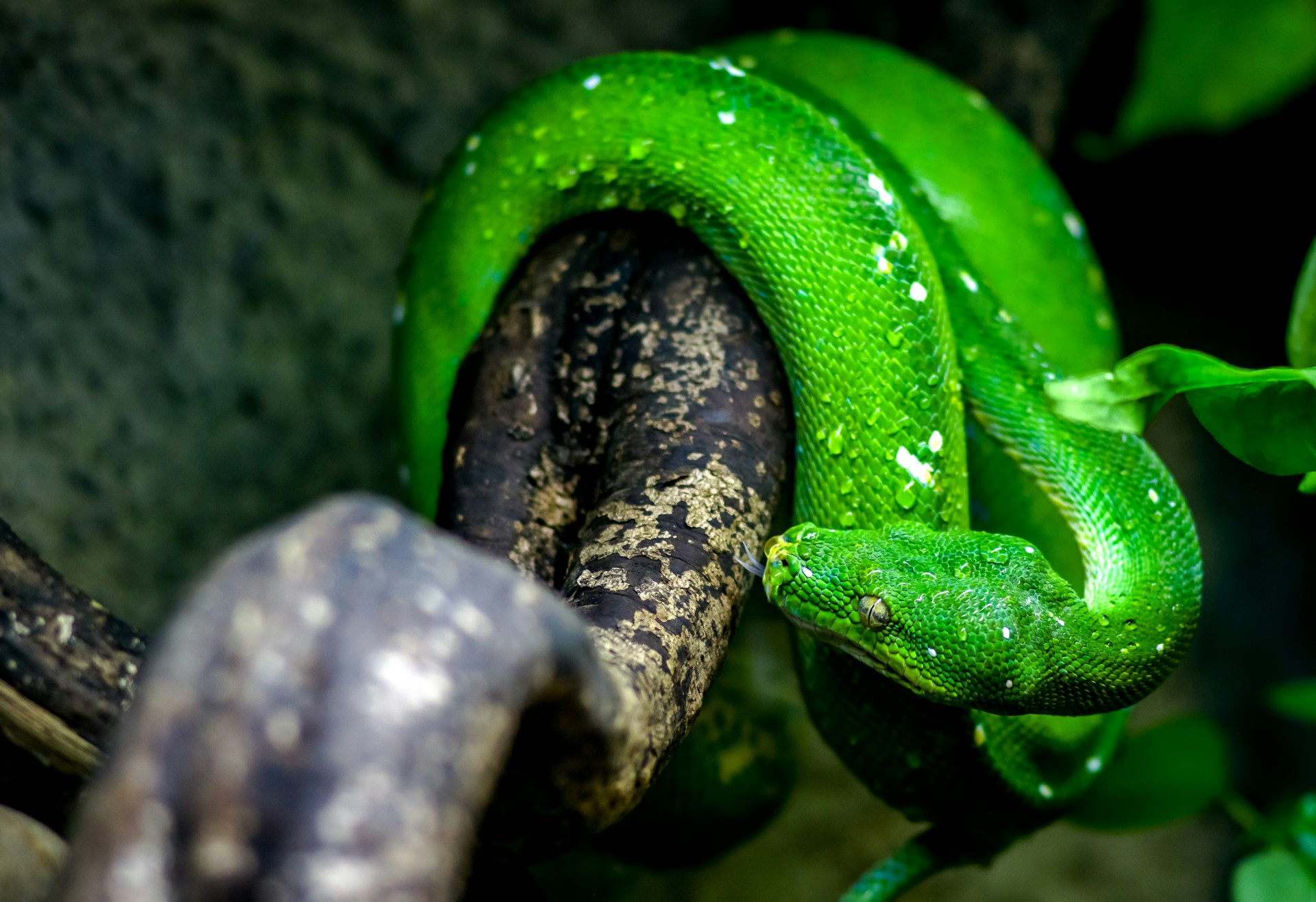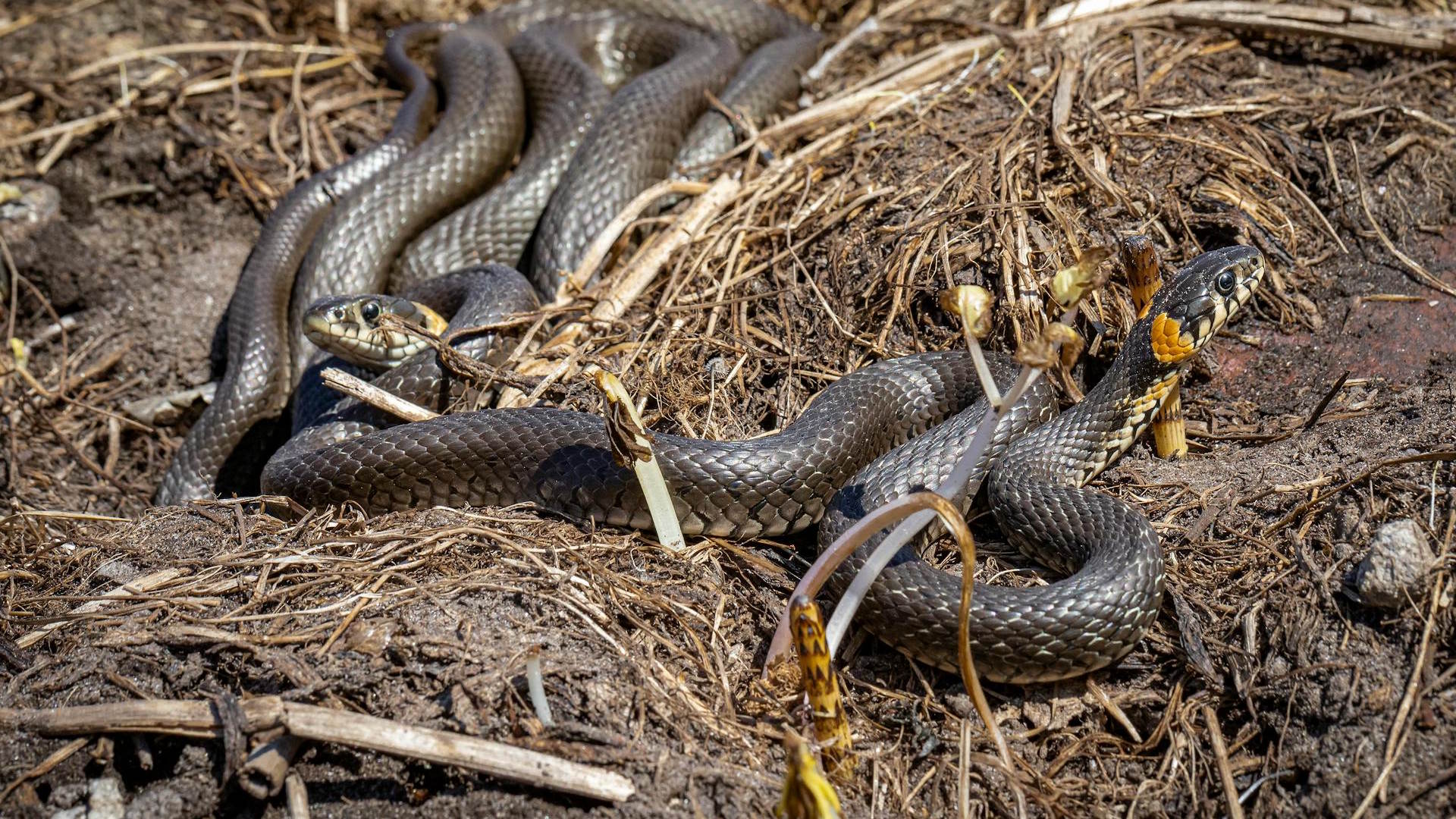For many reptile enthusiasts, limited living space doesn’t have to mean limited pet options. Non-venomous snakes can make excellent companions even in apartments, condos, or homes where space is at a premium. These fascinating creatures offer the allure of exotic pet ownership without requiring the extensive room that many traditional pets need. With proper housing, temperature control, and care, several snake species can thrive in compact enclosures while providing years of companionship. This guide explores the most suitable non-venomous snake species for keepers with space constraints, highlighting their characteristics, care requirements, and why they make ideal pets for small living environments.
Kenyan Sand Boas: Pocket-Sized Desert Dwellers

Kenyan Sand Boas (Eryx colubrinus) rarely exceed 24 inches in length, making them perfect candidates for small spaces. These stocky, cylindrical snakes spend much of their time burrowed beneath substrate, requiring only a 10-20 gallon enclosure for their entire lives. Their docile temperament and minimal handling needs suit novice owners who may be apprehensive about larger species. Kenyan Sand Boas display attractive patterns of orange, brown, and black blotches, adding visual interest without demanding excessive space. Their relatively simple care requirements include a warm spot of 90°F, a cool side of 75-80°F, and a diet of appropriately sized mice every 7-10 days for adults.
Children’s Pythons: Australia’s Compact Constrictors

Despite their name, Children’s Pythons (Antaresia childreni) are named after zoologist John George Children, not for being suitable for children—though they certainly are beginner-friendly. These Australian natives typically reach only 2-3 feet in length, making them one of the smallest python species available in the pet trade. A 20-30 gallon enclosure provides ample space for an adult specimen to thrive throughout its 20+ year lifespan. Children’s Pythons display a calm, inquisitive personality that makes them engaging pets that rarely show aggression. Their attractive tan to reddish-brown coloration with darker blotches provides aesthetic appeal without requiring the space needed for larger, more colorful constrictors.
Western Hognose Snakes: Charismatic Space-Savers

Western Hognose Snakes (Heterodon nasicus) combine small size with big personality, rarely growing beyond 2-3 feet in length. Their most distinctive feature is an upturned snout used for digging, which complements their dramatic defensive displays—hissing, flattening their necks, and sometimes playing dead when threatened. While technically rear-fanged, their mild venom is harmless to humans and primarily serves to subdue amphibian prey in the wild. A 20-gallon enclosure provides sufficient space for an adult hognose, with proper temperature gradients from 75-85°F and a basking spot of 88-90°F. These snakes come in various morphs, including albino, axanthic, and hypomelanistic varieties, offering visual variety in a compact package.
Rosy Boas: Gentle Desert Gems

Native to the southwestern United States and northern Mexico, Rosy Boas (Lichanura trivirgata) typically reach only 2-3 feet in length and have relatively slow growth rates. These docile constrictors are known for their calm demeanor and reluctance to bite, making them excellent pets for beginners or those with limited space. Their attractive coloration consists of three longitudinal stripes running the length of their bodies, with regional variants displaying different color combinations of tan, brown, orange, or gray. Rosy Boas thrive in 20-30 gallon enclosures with proper temperature gradients and relatively low humidity, mimicking their arid native habitat. With lifespans exceeding 25 years with proper care, these snakes offer long-term companionship without demanding extensive space.
Ringneck Snakes: Tiny Iridescent Beauties

For those seeking an exceptionally small species, Ringneck Snakes (Diadophis punctatus) rarely exceed 15 inches in length and can be comfortably housed in a 10-gallon terrarium. These diminutive serpents display a distinctive yellow, orange, or red ring around their necks, contrasting beautifully with their dark dorsal coloration and bright yellow or orange ventral surface. While more delicate than some other species and primarily insectivorous, properly acclimated captive-bred specimens can thrive with appropriate humidity and temperature conditions. Ringneck Snakes are primarily display animals rather than handling pets, making them ideal for enthusiasts who prefer observation over interaction. Their secretive nature means providing plenty of hiding spots within their small enclosure is essential for their psychological well-being.
Ball Pythons: Compact Constrictors with Character

While slightly larger than other species on this list, Ball Pythons (Python regius) remain manageable at 3-5 feet in length and can thrive in relatively modest enclosures. Adult females, which grow larger than males, can be comfortably housed in 40-gallon enclosures, though more space is always beneficial. Their docile temperament and tendency to curl into a ball when stressed (hence their name) make them excellent pets for those with limited space but desire for a slightly more substantial snake. Ball Pythons are available in hundreds of morphs with stunning patterns and colors, offering tremendous visual variety without requiring massive enclosures. Their relatively slow movement and calm demeanor make them ideal for apartment dwellers concerned about escape or handling difficulties.
Milk Snakes: Colorful Compacts

Various subspecies of Milk Snakes (Lampropeltis triangulum) offer vibrant coloration reminiscent of coral snakes but without the venom or space requirements of larger constrictors. Most milk snake subspecies reach only 2-4 feet in length, with some varieties like the Pueblan Milk Snake staying closer to the smaller end of that range. Their dramatic tricolor patterns of red, black, and yellow or white bands make them visually striking display animals that can thrive in 20-40 gallon enclosures. Milk snakes have relatively simple care requirements, including a temperature gradient from 75-85°F and moderate humidity levels. Their active nature means they make good use of the space provided, making them engaging pets for observation even in smaller terrariums.
Garter Snakes: Native Treasures

Common Garter Snakes (Thamnophis sirtalis) and their relatives offer the appeal of native wildlife for many North American keepers while requiring minimal space. These slender serpents typically reach 2-3 feet in length and can thrive in 20-30 gallon enclosures with proper enrichment. Captive-bred specimens adapt well to captivity and can become quite tame with regular handling. Unlike many other snake species, garters are diurnal, meaning they’re active during daylight hours when owners can enjoy observing their behaviors. Their varied diet in captivity can include fish, earthworms, and pinky mice, providing nutritional diversity without the need to store large rodent prey that many larger snake species require.
African House Snakes: Underrated Gems

African House Snakes (Lamprophis spp.) remain somewhat underrepresented in the pet trade despite their ideal size and temperament for small spaces. Rarely exceeding 3 feet in length, these colubrids display glossy scales in shades of brown, gray, or black, sometimes with attractive striping. Their docile temperament and willingness to accept handling make them excellent pets for apartments or small homes where space is limited. A 20-gallon enclosure provides adequate space for an adult specimen, though they appreciate additional climbing opportunities despite being primarily terrestrial. African House Snakes adapt well to captivity, readily accept frozen-thawed mice, and have straightforward care requirements that make them suitable for novice keepers with space constraints.
Corn Snakes: Perfect First Serpents

Corn Snakes (Pantherophis guttatus) have earned their reputation as the ideal beginner snake, combining manageable size with hardiness and docile temperament. Though they can reach 4-5 feet in length, their slender build means adults can be comfortably housed in 40-gallon enclosures. Available in dozens of captive-bred morphs displaying various colors and patterns, corn snakes offer tremendous visual variety without requiring extensive space. Their escape-artist tendencies mean secure enclosures are essential, but their active nature makes them engaging pets that utilize the full dimensions of their habitats. With proper care including a temperature gradient from 75-85°F and a diet of appropriately sized mice, corn snakes regularly live 15-20 years, offering long-term companionship in compact quarters.
Designing Space-Efficient Snake Habitats

Maximizing limited space for snake keeping involves thoughtful enclosure design and placement. Vertical space utilization through stacked enclosures can double or triple your capacity while maintaining a small footprint in your living area. For species that don’t require high humidity, specialized PVC rack systems offer efficient housing for multiple specimens in the space a single large terrarium would occupy. Creating functional décor that serves as both enrichment and hiding spaces—such as cork rounds that double as climbing and concealment opportunities—maximizes enclosure utility without cluttering small habitats. Temperature management becomes more crucial in compact setups, so investing in reliable thermostats and digital thermometers helps ensure proper thermal gradients despite space limitations.
Essential Care Considerations for Small-Space Snake Keeping

Successfully keeping snakes in limited space requires attention to several critical factors beyond simply choosing smaller species. Proper ventilation becomes increasingly important in small enclosures, as humidity and heat can build up more quickly than in larger habitats. Regular cleaning schedules must be maintained diligently, as waste products can affect air quality more rapidly in confined spaces. Small-space keepers should be particularly vigilant about escape prevention, using enclosures with secure locking mechanisms and inspecting regularly for potential weak points. Creating enrichment opportunities through varied terrain, hiding spots, and occasional habitat rearrangement helps prevent stress behaviors that might emerge from limited space, ensuring your serpentine companion remains physically and psychologically healthy despite compact quarters.
Conclusion: Big Enjoyment in Small Packages

The desire for exotic pet companionship need not be limited by living space constraints when considering these manageable non-venomous snake species. From the pocket-sized Kenyan Sand Boa to the colorful Corn Snake, these reptiles offer fascinating behaviors, striking appearances, and the unique joy of reptile keeping without demanding excessive space. With proper research into each species’ specific requirements, appropriate enclosure design, and commitment to regular care, snake enthusiasts in apartments, condos, or small homes can enjoy rewarding relationships with these remarkable animals. By selecting species appropriate to your experience level and available space, you can create a thriving micro-habitat that benefits both keeper and kept, proving that when it comes to reptile companionship, good things often come in small packages.




